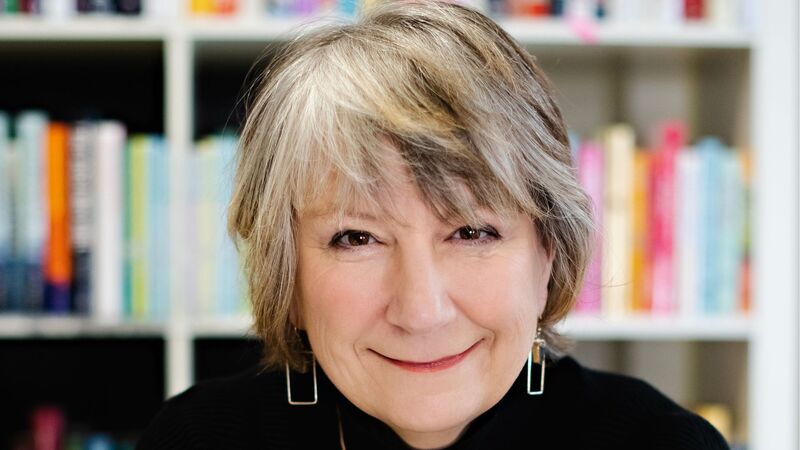You are viewing your 1 free article this month. Login to read more articles.
HarperCollins releases its first ethnicity pay gap report
HarperCollins has released its first ethnicity pay gap report alongside its annual one for gender pay, announcing it will now use diverse, balanced shortlists for senior roles.
In total 77% of staff volunteered to share their ethnicity. Director of people John Athanasiou said this was a “pretty healthy response” for the first year of the report, but stressed the publisher wants to improve the figures next year.
Data showed 10.1% of employees are from an ethnic minority background and there is a mean ethnicity pay gap of 8.2%. The mean pay gap is measured by adding up all the salaries and dividing it by the number of employees.
The publisher said this is driven by a lack of diversity in the top quartile, especially among the senior leadership, including in the HarperCollins’ executive committee, where only one person is from an ethnic minority background.
The median gap – the figure that falls in the middle of all employees’ salaries from lowest to highest paid – was close to zero (-0.4%). HarperCollins said this is because there is greater representation of ethnic minority employees within the middle quartiles, where the median employee in each group sits, than across the company as a whole.
There was a mean ethnicity bonus gap of 38%, again due to having fewer employees who are from ethnic minority backgrounds at the top of the company where higher bonuses are paid, while there was a negative median bonus gap of -7.1%.
HarperCollins said one of its key priorities going forward is to increase the ethnic diversity of its senior leadership teams and announced that from 2022 it will be using ethnically diverse, balanced shortlists for senior management to executive roles. For all other roles it will continue to recruit through its blind recruitment platform and will mandate structured panel interviews to mitigate bias at interview stage.
It will also continue to raise entry-level and early career salaries and update its mandatory inclusive hiring training for managers and has committed to sharing its recruitment data with hiring managers across the business.
Maheen Choonara, HarperCollins’ diversity, inclusion and belonging manager praised staff for being “really engaged” with the survey and understanding why it is important for the publisher to report on its ethnicity data. She said: “I think the big thing about diversity and inclusion has to be measurable, it has to be tangible."
She explained that the ethnicity data was collected in line with the groups used by the government and the Office for National Statistics to ensure it could be benchmarked. However, she stressed: “We know the ethnicities on those forms are limited and not everyone is going to see themselves represented and we hope when the government evolves their data collection we can evolve ours as well”.
The gender gap report, which uses snapshot data from 5th April 2021, showed women make up 68% of HarperCollins’ workforce. This year, the company reduced its mean gender pay gap by 4.2% points to 11.1%, and the median gender pay gap by 4.4% points to 4.4%.
HarperCollins said it was “pleased” at the progress made to ensure a more representative gender split across our organisation, with 64% women in the upper quartile, up 3% points on the last report and up 7% points since the publisher first reported its gender pay gap figures.
The median bonus gap was 11.2%, down from 26.7% last year. The mean bonus gap was 43.5%, down from 49.4% last year. HarperCollins stressed this was largely down to the fact that 20% of women work part time compared to 4% of men, and unlike the gender pay gap, the bonus pay gap is not assessed pro-rata, and therefore the average payment to women appears lower.
However, those taking parental and maternity leave from January 2022 will receive their full bonus payment. The publisher has also committed to focusing on pay transparency this year to help support career development and progression at the company.
Athanasiou said the move was a “huge project” adding: “[It] will hopefully mean we will be able to advertise our salaries on our roles as we go forward. But more importantly as well is our employees also being able to see a career and pay framework internally.”
Other key policies include embracing hybrid working and the menopause network group and policy.
Athanasiou said the publisher would “certainly consider” doing other pay gap surveys in future, but for now the focus remains on gender and ethnicity.
In October, Penguin Random House became the first publisher to reveal disability, sexual orientation and socio-economic pay gaps. PRH’s latest ethnicity gap report showed a mean ethnicity pay gap of 15.1% while the median ethnicity pay gap was 1.1%. Hachette’s most recent ethnicity pay gap was 14.1% across the group. The median gap was 7.9%.



















